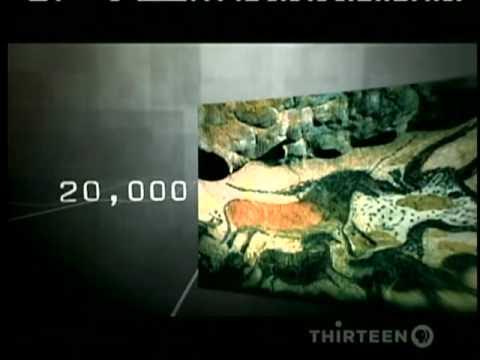(8) Who is the first human to arrive in Australia? How to judge the route of human migration?
Summary
TLDRThe script explores the migration and evolution of Homo sapiens from Africa, delving into genetic evidence, archaeological discoveries, and the impact of environmental factors on human development. It traces the paths of early humans, focusing on their spread across continents, particularly the migration of a group that reached Australia. Despite early advancements in tools and astronomy, the script reflects on the lack of civilization features in certain regions due to challenging environments. It raises the question of how geographical conditions shaped the fate of human societies, especially those in Australia's harsh landscape.
Takeaways
- 😀 110,000 years ago, Earth entered its most recent ice age, which lasted until around 12,000 years ago.
- 😀 During this ice age, Homo sapiens developed the ability to polish stone tools, marking the beginning of the Neolithic Age.
- 😀 Harsh climatic conditions led to the extinction of early human species like Homo erectus, but Homo sapiens survived and expanded.
- 😀 Traditional methods of studying human migration include language analysis and archaeological techniques such as isotope analysis.
- 😀 The rise in sea levels after the ice age has made it difficult for archaeologists to find traces of early human migrations.
- 😀 Molecular anthropology, studying mitochondrial DNA and Y-chromosome DNA, has provided insights into human origins and migration patterns.
- 😀 'Mitochondrial Eve' refers to the common ancestor of all women alive today, while 'Y-chromosome Adam' is the common paternal ancestor for all men.
- 😀 DNA mutations act like copying errors in a manuscript, helping track the routes and timing of human migrations over time.
- 😀 Homo sapiens who left Africa around 70,000 years ago spread to Asia, then continued their migration to Oceania, eventually reaching Australia.
- 😀 The ancestors of today's Australian Aborigines were among the first groups to leave Africa, facing harsh conditions in their new environment.
- 😀 Despite early advances in tools, art, and astronomy, the Australian Aborigines did not develop agriculture, metal tools, or writing, possibly due to their challenging environment.
Q & A
What event marked the beginning of the most recent Ice Age and when did it end?
-The most recent Ice Age began around 110,000 years ago and did not end until approximately 12,000 years ago.
What technological advancement occurred during the Ice Age that marked the beginning of the Neolithic Age?
-During the Ice Age, humans learned to polish stone tools, which marked the beginning of the Neolithic Age of farming.
What methods can be used to trace the migration routes of Homo sapiens?
-Migration routes can be traced through linguistic analysis, archaeological findings such as isotopic analysis, and genetic studies, including mitochondrial and Y-chromosome DNA.
Why is it challenging to use language alone to trace human migration patterns?
-It is challenging because languages change over time, and in regions with languages like Japanese or Basque, the changes are complex, making it difficult to draw clear migration routes.
What is the significance of mitochondrial DNA in tracing human ancestry?
-Mitochondrial DNA is passed down through the maternal line and can be used to trace human ancestry back to a single 'Mitochondrial Eve,' who lived around 200,000 years ago.
How does Y-chromosome DNA help trace the paternal lineage of humans?
-Y-chromosome DNA is inherited only through the paternal line, and it allows scientists to trace the lineage of all men back to a common ancestor known as 'Y-chromosome Adam,' who lived around 100,000 years ago.
How did Homo sapiens first leave Africa, and what genetic evidence supports this?
-Homo sapiens first left Africa around 70,000 years ago, and genetic evidence from Y-chromosome DNA shows that their migration followed a path from Africa to Asia and beyond, with mutations marking key points in the journey.
What environmental factors influenced the migration of early humans out of Africa?
-The Ice Age's low sea levels allowed early humans to cross land bridges, such as the Torres Strait, which connected Asia to Australia, facilitating their migration.
Why were Australian Aborigines considered the vanguard of Homo sapiens migration?
-Australian Aborigines are considered the vanguard of migration because their ancestors were among the first to leave Africa, arriving in Australia around 50,000 to 60,000 years ago, and developing early tools and artwork.
What factors hindered the development of civilization among Australian Aboriginals despite their early advancements?
-The barren land, volatile climate, and lack of domesticable animals and fertile soil in Australia prevented the development of agriculture, metal tools, and complex civilizations, freezing their technological progress for thousands of years.
Outlines

此内容仅限付费用户访问。 请升级后访问。
立即升级Mindmap

此内容仅限付费用户访问。 请升级后访问。
立即升级Keywords

此内容仅限付费用户访问。 请升级后访问。
立即升级Highlights

此内容仅限付费用户访问。 请升级后访问。
立即升级Transcripts

此内容仅限付费用户访问。 请升级后访问。
立即升级浏览更多相关视频

1of6 Evolution-Becoming Human-Part3-The Last Human Standing

TELMO PIEVANI - Quando Nacque la MENTE UMANA: come siamo diventati Sapiens

Sejarah Seru ❗️❗️❗️ SEJARAH MANUSIA PURBA DI INDONESIA - SEJARAH INDONESIA

What Is Evolution & types of HUMANS | Dr Binocs Show | Peekaboo Kidz

Prehistory in India : Palaeolithic Period - I

When We Took Over the World
5.0 / 5 (0 votes)
